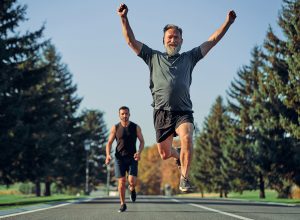
Weekend Warriors: How to Stay Active Without Getting Injured
Being a weekend warrior is fun, energizing, and empowering. Here are 7 key injury prevention tips to help you stay active — and stay safe.

Being a weekend warrior is fun, energizing, and empowering. Here are 7 key injury prevention tips to help you stay active — and stay safe.

Learn how carrying extra weight impacts your bones, joints, and mobility. Discover expert tips and treatments from OrthoConnecticut for better joint health!

Medically reviewed by Teddy S. Wolfson, M.D. As women age, maintaining muscle mass, bone density, and overall vitality becomes increasingly important. Strength training, often overlooked in favor of cardiovascular exercise, is a powerful tool that can significantly impact health and longevity, especially for women over 50. As orthopedic specialists who focus on the musculoskeletal system and its care, we encourage everyone to consider strength training as part of their overall fitness routine. This blog explores why incorporating strength training into your lifestyle is essential and how it can transform your body and how it ages. Why Strength Training Matters for Women Over 50 1. Preserving Muscle Mass As we age, our bodies naturally lose muscle mass—a process known as sarcopenia. This decline can begin as early as our 30s, accelerating after 50. Strength training is the most effective way to combat sarcopenia. By regularly challenging your muscles with resistance exercises, you can slow down or even reverse muscle loss, helping to maintain strength, balance, and mobility. 2. Enhancing Bone Density Osteoporosis, a condition characterized by weak and brittle bones, is a significant concern for aging women. The risk of fractures increases with age, particularly after menopause, when the decline in estrogen levels accelerates bone loss. Strength training places stress on the bones, stimulating the production of new bone tissue. This process can help maintain or improve bone density, reducing the risk of osteoporosis and fractures. 3. Boosting Metabolism Muscle tissue is metabolically active, meaning it burns more calories at rest compared to fat tissue. As you build muscle through strength training, your resting metabolic rate increases, making it easier to manage your weight. This is particularly important for women over 50, who often experience a natural slowdown in metabolism due to hormonal changes. 4. Improving Joint Health and Reducing Pain There’s a common misconception
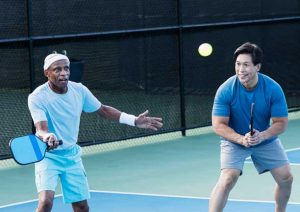
Medically reviewed by Dr. Michael Brand The rapid rise of pickleball, a fast-paced and exhilarating sport, has been remarkable. With its blend of tennis, badminton, and ping-pong, pickleball offers a unique avenue for recreation, athletics, and competition. However, like any physical activity, it comes with its share of risks, especially concerning bone, joint, and musculoskeletal injuries. Our orthopedic professionals recommend proper injury prevention techniques and treatment to avoid injury and maintain optimal health. The Most Common Pickleball Injuries Despite its relatively low-impact nature compared to other sports, pickleball can still lead to injuries, particularly in the joints and muscles. Common pickleball injuries include: Orthopedic Treatment for Pickleball Injuries Prompt evaluation and treatment are crucial for addressing pickleball-related injuries effectively. Orthopedic specialists play a pivotal role in diagnosing and managing these conditions. Here’s what patients can expect during their orthopedic care: Returning to Pickleball Safely: While the desire to return to the court may be strong, it’s essential to prioritize a gradual and controlled comeback. Light drills and gradually increasing intensity can help assess readiness and prevent re-injury. Communicating with your orthopedic physician or physical therapist allows for ongoing progress monitoring and adjustment of treatment plans as needed. Injury Prevention: What Doctors Wish People Knew About Preventing Pickleball Injuries Orthopedic doctors play a crucial role in treating pickleball injuries, and they often have valuable insights into preventing these injuries from occurring in the first place. Here are some key points that doctors wish people knew about preventing pickleball injuries: 1. Warm-Up Properly Doctors emphasize the significance of warming up before engaging in pickleball or any physical activity. A proper warm-up routine helps increase blood flow to the muscles, improve flexibility, and prepare the body for gameplay demands. Dynamic stretching, light cardio exercises, and joint mobilization techniques are essential to a good
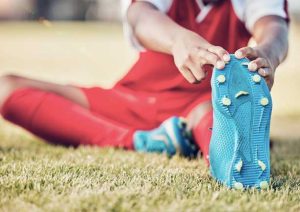
Medically reviewed by Angelo Ciminiello, M.D. Yes, children can get shin splints. Shin splints, also known as medial tibial stress syndrome, can occur in children who engage in activities that involve repetitive impact on the legs, such as running, jumping, or playing sports like soccer or basketball. Shin splints can be a common source of discomfort and pain for young athletes, but with proper knowledge and proactive measures, they can be effectively managed. In this article, we will explore the symptoms, causes, diagnosis, and treatment options for shin splints in kids. By understanding these key aspects, parents, coaches, and young athletes themselves can work together to ensure a safe and healthy sporting experience. So, let’s dive into the world of shin splints and discover how to keep young feet moving with confidence and comfort. Symptoms of Shin Splints The symptoms of shin splints in children may include: If your child is experiencing symptoms of shin splints, it’s essential to provide them with adequate rest and avoid activities that exacerbate the pain. Applying ice packs to the affected area and using over-the-counter pain relievers can help reduce inflammation and discomfort. Stretching and strengthening exercises prescribed by a healthcare professional may also aid in recovery. Causes of Shin Splints Overuse and repetitive stress: Engaging in high-impact activities, such as running, dancing, and jumping, without proper conditioning and gradual progression can strain the muscles and tendons in the lower leg, leading to shin splints. Sudden increase in activity level: A rapid increase in training intensity, duration, or frequency can overload the muscles and tissues in the lower leg, increasing the risk of developing shin splints. Improper footwear: Wearing shoes that lack proper support, cushioning, or do not fit well can contribute to the development of shin splints. Inadequate shock absorption can increase stress

Medically Reviewed by Dr. Angelo Ciminiello Key Takeaways This guide is for active adults, athletes, or weekend warriors who suspect they’ve pulled their hamstring and want to know what signs to look for and what to do next. A hamstring strain, also known as a pulled hamstring, is a common injury that occurs when the muscles at the back of the thigh are stretched or torn. It typically happens during activities that involve sudden movements, excessive stretching, or forceful contractions of the hamstring muscles. The severity of a hamstring strain can range from mild to severe, affecting mobility and causing pain. Common causes of hamstring strains include inadequate warm-up, muscle imbalances, fatigue, and previous injuries. Factors like age, poor flexibility, and inadequate conditioning can also increase the risk. Recognizing the signs and symptoms of a pulled hamstring is important for diagnosis and appropriate treatment. 7 Signs of a Strained Hamstring A strained hamstring can be identified by several signs that indicate injury or damage to the muscles or tendons at the back of the thigh. Here are 7 key signs to watch for: 1. Pain One of the most common signs of a strained hamstring is pain in the back of the thigh. The intensity of the pain may vary depending on the severity of the strain. 2. Tenderness The affected area may feel tender to the touch. Gentle pressure on the hamstring muscles can elicit discomfort or pain. 3. Swelling In some cases, a strained hamstring may cause swelling around the injured area. The swelling may be localized or spread across a larger portion of the thigh. 4. Bruising If the strain is severe, it can lead to bruising around the hamstring muscles. The presence of bruising indicates internal bleeding or tissue damage. 5. Muscle Weakness A strained hamstring

Now that temperatures are getting cooler, many of our patients halt their outdoor workout routines (running, walking, outdoor sports) to avoid the chilly temperatures. While it’s tempting to take the cold weather months off and simply curl up by the fireplace with a good book or binge a series, the truth is there are many benefits to working out in colder temperatures. What Are The Benefits Of Working Out In Cold Weather? Studies have shown that working out in colder temperatures can actually improve your endurance and boost your metabolism. This is because your body needs to work harder to perform in colder temperatures to generate enough heat to keep your muscles and organs warm. The result is burning more calories while performing the same tasks in warmer temperatures. While working out in the heat causes you to sweat and become exhausted more easily, cold-weather workouts usually enable you to go longer without those factors, allowing you to build endurance and stamina. Moreover, getting a dose of sunlight when working out outdoors provides a dose of Vitamin D and a release of endorphins, both of which improve your mood and can help fight against Seasonal Affective Disorder (which can cause depression in the darker winter months). Studies have also shown that people who exercise in the cold experience improvement in decision-making, focus, and memory. When is it too cold to exercise outside? While the ideal cooler temperature to work out in is around 50 degrees, the American College of Sports Medicine has stated that “exercise can be performed safely in most cold-weather environments without incurring cold-weather injuries. However, they recommend avoiding an outdoor workout in wind chill temperatures lower than -18 degrees. What are the best outdoor exercises in cold weather? All “cardio” or aerobic exercises like running, fast walking, jogging or
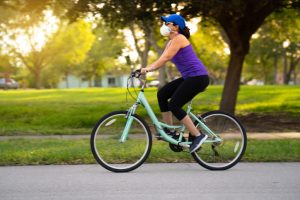
Athletes Need to “Rest and Test” After COVID-19 Before Returning to Exercise and Sports Athletes and weekend warriors, who have had COVID-19, will need to take special care and be cleared before resuming exercise, intense training and/or competitive sports. Why? Because COVID-19, a viral infection, can cause heart complications such as arrhythmia or myocarditis. Since many people don’t actually know if they had Covid-19 (many people are non-hospitalized, mildly symptomatic, asymptomatic, or pre-symptomatic), this warrants caution for everyone. So, what to do? I feel fine… is it okay to exercise again? Here are some thoughts on returning to exercise and sports, but you must consult with your physician and your cardiologist to be sure you are cleared to exercise: Exercise and physical fitness, especially outdoors now that the weather is good, can be an excellent way to improve health and emotional well-being following the pandemic outbreak and stay-at-home period. If you had Covid-19, be sure you are knowledgeable about any impact on your heart and be sure to have a cardiologist engaged that will monitor your heart health as you build your musculoskeletal strength. OrthoConnecticut Can Help Our physicians and physician assistants advise caution beginning exercise after COVID-19 and recommend consultation with a cardiologist about any cardiac conditions. For exercise advice or orthopedic concerns we’re here to help. Contact us today for an appointment and #getmovingCT!
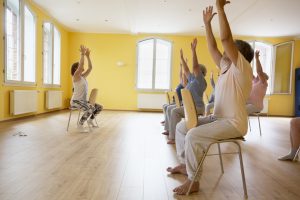
Anytime is a perfect time to make a resolution including moving more through exercise. Make an exercise plan that includes small, achievable goals that encourage and motivate you as you succeed. It takes 90 days to build a habit, so be sure to add the critical ingredient of patience to your mix of planning and activity. And be sure to include an attitude of flexibility, and adapt and change your exercise routines to keep them fresh and motivating. Combining different types of activities, such as Pilates with running, or yoga with cycling, can help you maximize muscle strengthening while bolstering your commitment. Here are some thoughts to consider. OrthoConnecticut Can Help Our physicians and physician assistants are available to help you if you need assistance with your exercise plan, getting advice for orthopedic or musculoskeletal limitations, or if you’ve injured yourself. Contact us today for an appointment and #getmovingCT.

De-stress this holiday season with a gentle yoga practice Practicing yoga can be a great way to get exercise and stay calm during the stressful holiday season. A consistent yoga practice has so many incredible benefits, including reducing heart rate, lowering blood pressure, reducing anxiety and depressive tendencies, and easing back pain — not to mention the stretching and muscle strengthening benefits to the body. Understanding Joint Anatomy Yoga uses every muscle and joint of the body. One key thing to remember is that each joint functions differently. For example, the knee is a hinge joint, meaning it allows the leg to extend and bend back and forth with minimal side-to-side motion. Its motion during yoga should remain within the natural back and forth movement of this “hinge”. The hip, on the other hand, has a unique anatomy which enables it to be both extremely strong and amazingly flexible, so it can bear body weight AND allow for a wide range of movement. The hip joint allows the leg to move back and forth (flexion and extension), out to the side (abduction) and inward toward the other leg (adduction). It also enables rotation, allowing us to point our toes inward (internal rotation) or outward (external rotation) and moving the straight leg in the direction of the toes. OrthoConnecticut recommends a few tips to as you enjoy your yoga practice this season: OrthoConnecticut Can Help Our physicians and physician assistants are available to help you if you’ve injured yourself this holiday season. Contact us today for an appointment and #getmovingCT.

Girls and Sports is a Win-Win Girls participating in sports is a win-win that stretches far beyond known physical aerobic benefits. Being part of a team encourages cooperation, self-reliance, confidence/self-esteem, friendships, adventure, fun, health benefits and the joy of movement and teamwork that carries into adult life. Are there obstacles? Yes! There are fewer obstacles because of Title IX, but disincentives such as cost, access, and “throws like a girl” comments still exist. Even so, the benefits certainly outweigh them. What are some of the benefits? According to momsTEAM, a trusted source for parents, sports benefits girls in many ways including getting through the trials of adolescence: Tips to keep girls in the game as they grow into adulthood OrthoConnecticut & OrthoCare Express Can Help Our physicians and physician assistants are available to advise on sports safety. We know accidents happen, that’s why walk-in orthopedic specialist care is available 7-days a week at our urgent care service, OrthoCare Express. Download our vCard so the contact information is already in your address book, should an emergency happen.
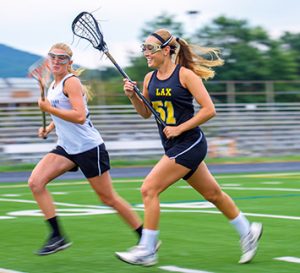
Today’s Youth Sports Injuries and How to Keep Up By Dr. Joshua B. Frank, OrthoConnecticut Over the years we have learned a tremendous amount about sports, physiology, bio-mechanics, and technique. This advancement in knowledge has allowed athletes to become faster, stronger, quicker, and more efficient. Sports medicine has advanced concurrently, and there has been a particular focus on youth athletes. Sports injures can be thought of in two categories: acute and sub-acute, or chronic injuries.
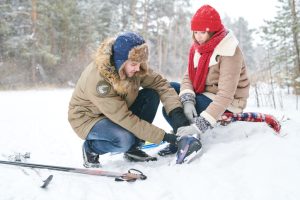
Preparing for injuries can help prevent or minimize common snow skiing-related injuries and help you to avoid hospital, doctor’s offices and emergency room visits and costs.
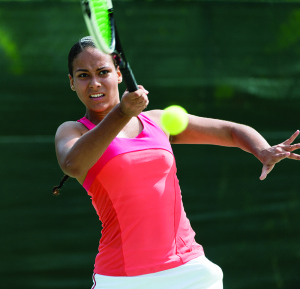
By Paul D. Protomastro, M.D. Hand & Upper Extremity Surgeon, OrthoConnecticut TENNIS AND GOLFER’S elbow are common orthopaedic conditions that lead to pain, weakness and disfunction of the elbow. Both conditions actually represent tears of the forearm tendons off of the humerus bone at the elbow. A tear on the outside (lateral) part of the elbow is known as Tennis elbow. A tear on the inside is known as golfer’s elbow. The muscles involved in this condition help to extend (tennis) and flex (golfer’s) the wrist. With both disorders there is degeneration of the tendon attachment usually following repetitive grasp or lifting activities and subsequent weakening of the anchor site leading to tendon detachment. Patients usually experience the insidious onset of elbow pain associated with activities in which this muscle is active, such as lifting, gripping, and/or grasping. Sports such as tennis, golf and weight training are common causes. The problem can occur with many different types of activities such as home renovation and gardening.
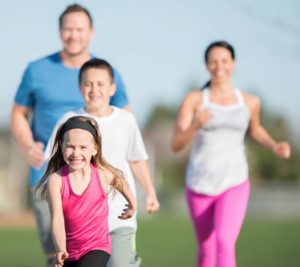
Running Right – to Avoid Common Injuries Story by Ross Henshaw, MD, Sports Medicine Specialist, OrthoConnecticut DANBURY, CT – As any runner will tell you, this simple sport is one of the most rewarding and convenient exercise activities. It’s a wonderfully efficient way to improve your health, except when it produces chronic, nagging injuries. So what’s the best way to safely enjoy a running program? Start smart, with a progressive training schedule that gradually builds the intensity and duration of your workouts.
Call OrthoConnecticut today at 1.833.678.4628 to learn more or to schedule an appointment.
Accessibility statement
for individuals with disabilities:
We are committed to ensuring that our website and mobile applications are accessible to individuals with disabilities. Please use the blue icon in the lower right corner to access many helpful tools. If you need assistance using our website, or assistance with a document on the website, we can help you. Please contact us by email at info@myorthoct.com or by telephone at 1.833.ORTHOCT (1.833.678.4628).
1.833.ORTHOCT
(1.833.678.4628)

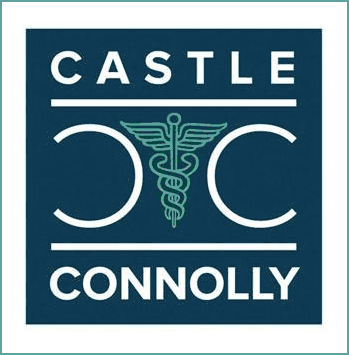

Accessibility statement
for individuals with disabilities:
We are committed to ensuring that our website and mobile applications are accessible to individuals with disabilities. Please use the blue icon in the lower right corner to access many helpful tools. If you need assistance using our website, or assistance with a document on the website, we can help you. Please contact us by email at info@myorthoct.com or by telephone at 1.833.ORTHOCT (1.833.678.4628).
We are committed to providing comprehensive care to Fairfield County, New Haven County, Litchfield County; New York State's Westchester, Dutchess, & Putnam Counties; and the Great Barrington region of Massachusetts.
This website provides general information about OrthoConnecticut, its practice areas and professional staff. Nothing in this website constitutes individual medical advice which may only be obtained as a result of personal consultation with a physician. Sending an e-mail to OrthoConnecticut, its physicians or office staff does not create a patient-physician relationship.
© 2025 OrthoConnecticut | Accessibility Statement | Site Map | Terms of Use | Non-Discrimination Policy | Website Design: Brandmark Studios